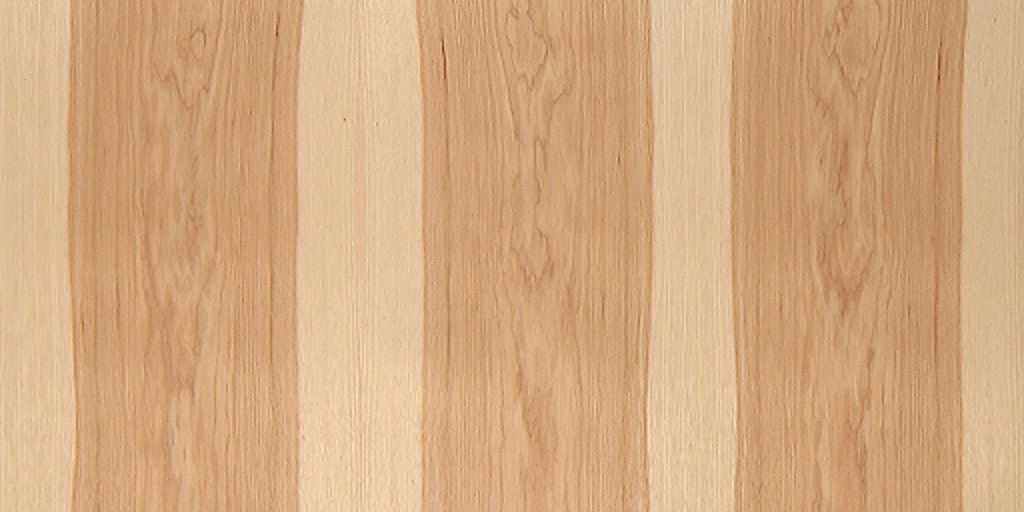Plenty of projects warrant the use of attractive, exotic woods like zebrawood, teak, mahogany, and ebony, or even burl wood veneer..
Yet, at the same time, some projects just need a reliable, quality hardwood, domestic or otherwise, that is more prized for its workability and durability than for its form.
With that said, here are some reasons to consider hickory, specifically hickory veneer, for your next project.
Strengths of Hickory
There are many reasons why you might want to use hickory veneer (or even solid hardwood) in your next project, including but not limited to the following:
● Strength: No pun intended, but strength is the main strength of hickory. This is an incredibly dense, strong hardwood, one of the strongest in North America, in fact. Actually, hickory is stronger and harder than both white oak and hard maple, two other species prizes for their durability. It’s not just strong, either - it has a Janka hardness of 1820, making it incredibly wear, scuff, gouge, and scratch resistant. There’s a reason we still make tool handles from this stuff!
● Workability: This is a virtue, specifically, of hickory veneer. You see, because of its density and hardness, hickory is notoriously difficult to work with - solid hickory, that is. It’s a lot easier to work with veneer, which can (in some ways) be more forgiving.
● Accessibility and Affordability: Because it is a domestic hardwood, there is usually a steady supply of fairly affordable hickory wood. This makes it an attractive choice for those who want to work wood on a budget.
● Environmental Concerns: Unlike many exotic species (like those mentioned at the top of this article) there is generally little concern about the future of hickory. Multiple species grow widely across the eastern and southern United States, and moreover, since they grow here, the supply chain is shorter, too, minimizing the overall carbon impact of the purchase.
Common Uses of Hickory
Solid hickory is commonly used to make furniture, flooring, paneling, tool handles, and baseball bats - but those things are not particularly suitable for veneer application.
Rather, hickory veneer can be used effectively in wall paneling, to accent furniture, in cabinetry, and in other domestic applications.
Also, though hickory is not as easy to finish and stain as some other woods, the light color and grain of hickory make it a prime candidate for staining, if you like the look of a different, more appealing color.
Alright, but Why Hickory Veneer? And Where Can I Get It?
Now that you know what hickory can be effectively used for, and why this is a choice species, let’s cover the virtues of veneer:
● Enhanced workability: While solid hickory is hard to work with, veneer is a little more forgiving. Just make sure your tools are sharp and you protect against tearout.
● Sustainability: One single log can produce a large quantity of veneer panels or sheets. This stretches one harvest much further when it is used to make veneer.
● Price: Because veneer only uses very thin slices of wood, it is typically much more affordable than solid hardwood - even an affordable species like hickory.
These are only some of the high level reasons that hickory veneer might make a great choice for your upcoming project. If you’re still looking for some ideas for inspiration, or have questions about matching or how to apply veneer before you buy, get in touch with the experts at Oakwood Veneer.
They carry countless species of veneer panels and sheets, both domestic and exotic, and are a leader in their industry. Reach out to them if you have questions before you start.
For more information about Birch Veneer and Burl Veneer Please visit: Oakwood Veneer Company.


No comments yet